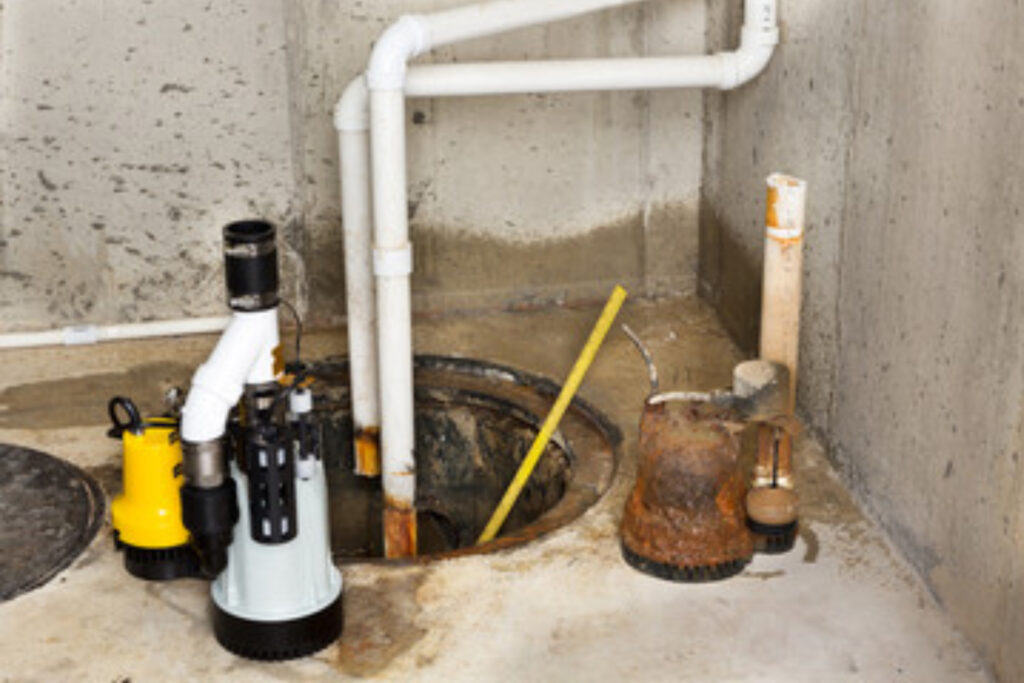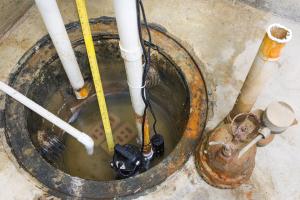Here underneath you can locate more sound tips related to Steps to Cleaning Your Sump Pump Properly.

Sump pumps are essential parts in several homes, especially in locations vulnerable to flooding or excessive wetness. They assist stop water damages by successfully getting rid of excess water from cellars or crawl spaces. Nonetheless, like any other home appliance, sump pumps call for regular maintenance to ensure they work effectively when required one of the most. Cleansing your sump pump is a crucial part of its maintenance, and comprehending just how to do it effectively can save you from costly repair work and prospective calamities.
Introduction
Maintaining a clean sump pump is crucial for its proper performance and longevity. Disregarding this crucial job can cause obstructions, malfunctions, and ultimately, water damages to your building. For that reason, learning how to clean a sump pump is vital for home owners that rely upon these tools to keep their basements completely dry and safeguarded.
Indications of a Dirty Sump Pump
Knowing when your sump pump needs cleaning is crucial for stopping potential malfunctions. Some typical signs that indicate a dirty sump pump include unusual sounds during operation, reduced water flow, and noticeable particles in the pit. If you notice any of these signs and symptoms, it's necessary to cleanse your sump pump without delay to prevent any additional concerns.
Planning for Cleansing
Before you start cleansing your sump pump, it's important to take some security preventative measures. Beginning by turning off the power to the pump to prevent any electrical crashes. Additionally, put on ideal protective gear, such as handwear covers and goggles, to safeguard on your own from dirt, particles, and prospective microorganisms.
Comprehending the Sump Pump
Before diving right into the cleansing process, it's necessary to have a fundamental understanding of just how a sump pump functions. Normally mounted in a pit or basin below the basement floor, a sump pump consists of a number of key parts, consisting of a pump, a float button, and a discharge pipeline. When water builds up in the pit, the float switch activates the pump, which then pumps the water out via the discharge pipe, away from the building's foundation.
Step-by-step Guide to Cleaning Up a Sump Pump
Shutting down the Power
Begin by disconnecting the power supply to the sump pump to avoid any type of accidents while cleaning.
Checking for Appropriate Performance
Before reinstalling the pump, execute a quick test to make sure that the float switch turns on the pump correctly. Pour some water into the sump pit and observe the pump's procedure. If everything is operating correctly, you can reconstruct the pump and reconnect the power supply.
Getting Rid Of Particles and Dust
Make use of a bucket or a scoop to eliminate any visible particles, dirt, or debris from the sump pit. Dispose of the particles appropriately to prevent it from blocking the pump or the discharge pipe.
Cleansing the Pump and Float Switch
As soon as the pit is clear of debris, very carefully get rid of the pump from the pit. Check the pump and the float button for any kind of signs of damages or wear. Use a soft brush or fabric to cleanse the surfaces and eliminate any gathered crud.
Purging the System
After cleaning up the pump and float button, flush the sump pit with clean water to eliminate any type of continuing to be dust or sediment. This will certainly aid ensure that the pump operates efficiently and efficiently.
Maintenance Tips to Keep Your Sump Pump Clean
Along with routine cleansing, there are several upkeep ideas you can follow to maintain your sump pump in optimum problem:
Conclusion
Cleansing your sump pump is a crucial facet of its maintenance and makes sure that it operates successfully when you need it one of the most. By adhering to the steps described in this guide and incorporating normal upkeep right into your routine, you can extend the lifespan of your sump pump and safeguard your home from water damages.
6 STEPS ON HOW TO CLEAN A SUMP PUMP PROPERLY
UNDERSTANDING SUMP PUMPS
Your sump pump plays a crucial role in protecting your home by managing and removing excess water. It primarily functions as a “shield”, guarding your basement against the damaging effects of water accumulation. The pump is housed in a sump pit in the lowest part of your basement, and its job is to pump out any water that collects there.
During heavy rainfalls or when snow melts rapidly, water can infiltrate your basement, posing potential risks like flooding, structural damage, and harmful mold growth. Here, the sump pump springs into action, pumping out the intruding water and directing it away from your home.
SAFETY FIRST
Before cleaning, remember to prioritize safety. Disconnect the sump pump from the power source to prevent any accidental electric shocks. Also, wear sturdy gloves to protect your hands from any sharp or dirty components within the pump.
REMOVE THE SUMP PUMP
After ensuring your safety, the next step is to remove the sump pump from its pit. Doing this might require careful maneuvering as you don’t want to damage any pump components. Once removed, clean the sump pit to remove any accumulated debris or sludge.
INSPECT THE PUMP
Inspect the pump for any visible signs of wear or damage. Check the power cord, float switch, and impeller housing. If any components look worn out or damaged, consider replacing them to ensure optimal performance.
CLEAN THE PUMP
Thoroughly clean the pump with warm, soapy water. Make sure to rid it of any dirt, gravel, or other debris that might impede its performance. You can use a toothbrush to clean the small, hard-to-reach parts of the pump.
REINSTALL THE SUMP PUMP
Reinstall the pump into the sump pit Make sure it’s positioned correctly to remove the water effectively Once it’s back in place, reconnect it to the power source TEST THE PUMP
Finally, pour some water into the pit to ensure the pump works correctly. It should start automatically and begin pumping out the water; if it doesn’t, check the power source and the positioning of the pump.
Remember, while cleaning your sump pump is an essential part of home maintenance, hiring a professional plumber for a thorough inspection and cleaning at least once a year is also important. This will ensure that your pump is in optimal condition, ready to protect your home from potential water damage.
BEST PRACTICES FOR CLEANING SUMP PUMP DISCHARGE PIPES
Regular Inspection: Regularly inspect your discharge pipes, especially during heavy rainfall or snowmelt periods. Look for any signs of blockage or damage. Early detection of problems can prevent serious issues down the line. Periodic Cleaning: Over time, sediment and debris can accumulate in the discharge pipes, impeding the flow of water. Regular cleaning helps keep the pipes clear and functioning efficiently. You can use a high-pressure water jet to effectively clean the pipes. Insulation During Winter: In colder climates, discharge pipes can freeze, blocking the outflow of water. Protect your discharge pipes from freezing temperatures by insulating them with foam pipe insulation. This will ensure the sump pump can continue to discharge water even in freezing conditions. Proper Positioning: The discharge pipe should be positioned to direct water away from your home’s foundation. Improper positioning can lead to water seeping back into the basement. Ensure the pipe is long enough and angled correctly. Installation of a Check Valve: A check valve prevents water from flowing back into your sump pit after the pump has pushed it out. Installing a check valve helps maintain the efficiency of your sump pump and reduces the risk of flooding. Minimize Pipe Turns: Every curve or turn in the discharge pipe can decrease the efficiency of water flow. By minimizing turns and bends in your discharge pipe, you can increase the efficiency of your sump pump. https://www.fullspeedplumbing.com/how-to-clean-a-sump-pump-properly9999/

I stumbled upon that blog post on when doing a lookup on the internet. So long as you liked our post plz don't forget to share it. Thank you so much for your time spent reading it.
Get Your Estimate Now